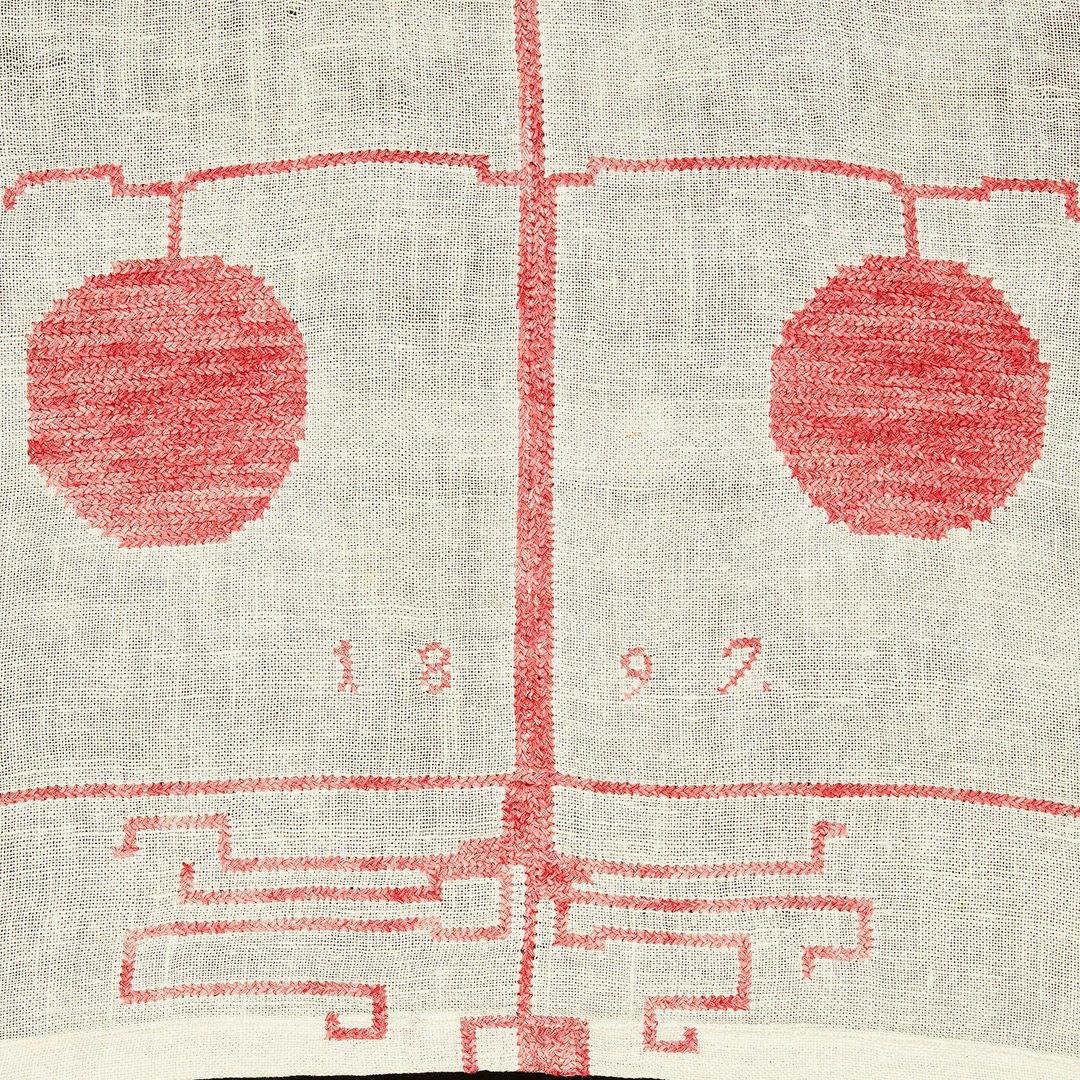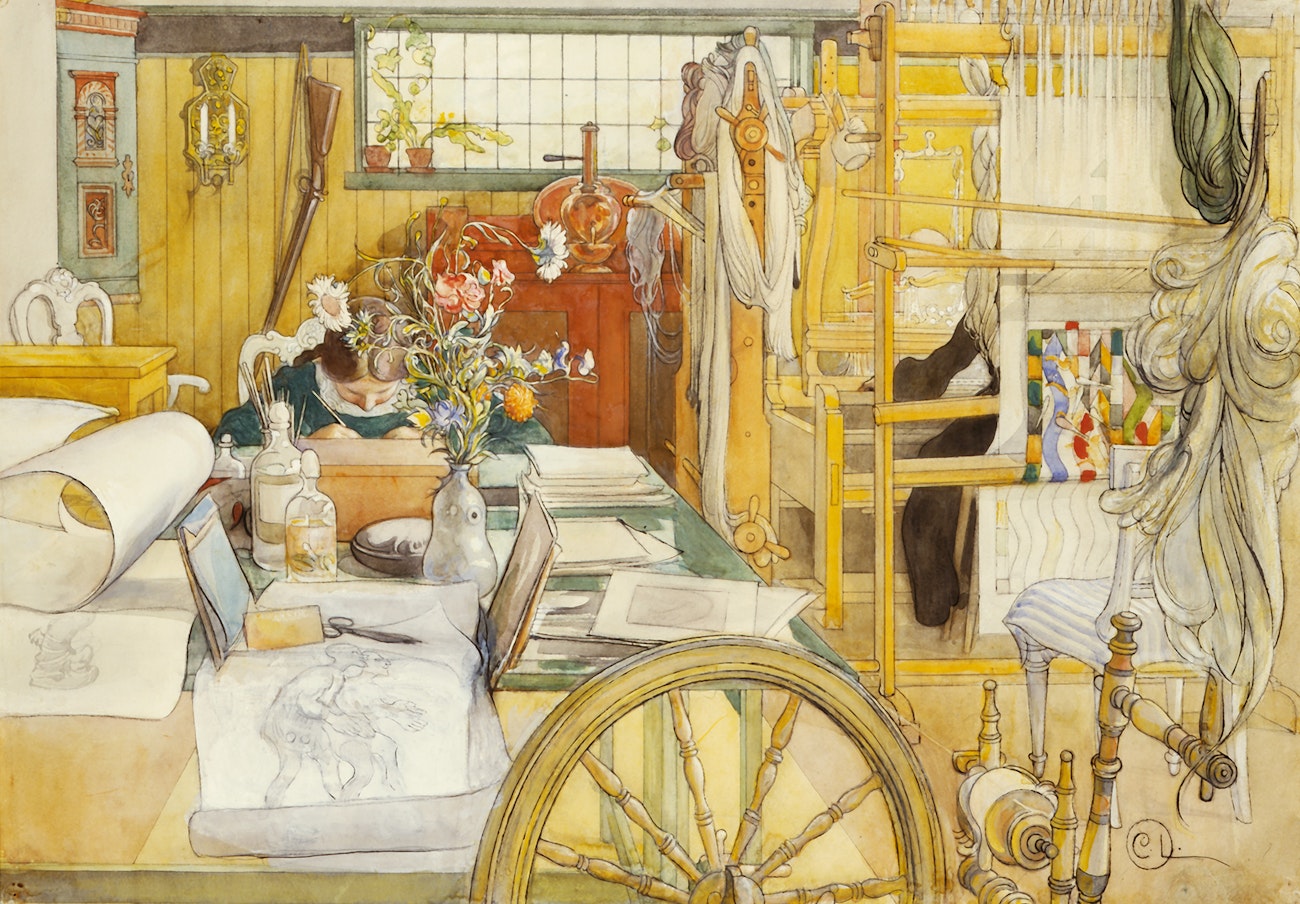Karin Bergöö was born to an upper middle-class family in 1859. As such, she had more opportunities that many people, let alone other women, had access to. She attended the Slöjdskolan in Stockholm (Handicraft School, now Konstfack), then continued further and enrolled at the Konstakademien (Royal Swedish Academy of Arts in Stockholm) to study painting, where she graduated at the age of 23. Already with an impressive education and portfolio, Karin wanted more than what Sweden could offer her. She moved to a Scandinavian artists’ village in Grez-sur-Loing, France, in 1882. It was here that she met Carl Larsson. They married swiftly a year later in 1883, and their first child, Suzanne, was born in 1884. They returned to Sweden in 1885.
 Detail, Family Tree Table Runner, Karin Larsson, 1897, Sundborn, Sweden, Courtesy of Carl Larsson-gården
Detail, Family Tree Table Runner, Karin Larsson, 1897, Sundborn, Sweden, Courtesy of Carl Larsson-gården
Even though Karin had a burgeoning career as a paint artist, as was expected of women in the era, she gave it up in favor of domestic motherhood. However, she did not give up on art and creativity. Her art merely changed forms. In 1888, Karin’s father gave the growing family an old family cottage, Lilla Hyttnäs, in Falun, Sweden. The house became her new canvas. She traded paint and canvas for needle and thread and warp and weft. Inspired by contemporary art movements—such as the Arts and Crafts movement, Art Nouveau, Modernism, and Japonisme—and the desire to regain folk and “peasant” culture, Karin and Carl decorated their home in a very different way than their other late-Victorian counterparts. They eschewed heavy, ornate furniture, dark colors, and closed doors. Instead they embraced simple Gustavian furniture, bright colors, and openness.
 The Workshop, watercolor, Carl Larsson, 1908
The Workshop, watercolor, Carl Larsson, 1908
Karin made much of the décor for the home. Many of the works that she made for the home can be seen in Carl’s paintings. In the background of many of his works, there are looms, bolts of fabric, spinning wheels, and knitting needles, further cementing the role of textile work in the family’s life. While these pieces were art, they are at the same time functional. More still, while they are functional, they are also art. Often in today’s world, pieces are made simply for decoration and people are afraid to use them. The Larssons were not afraid to use their art. Karin’s style was something new and different, and it led to the modern idea of clean, light, bright “Swedish Style” that we have today.
More information about Karin Larsson and the American Swedish Historical Museum can be found at their website. They are hosting an exhibition, titled “Karin Larsson: Let the Hand be Seen,” from October 19, 2023, to February 18, 2024.
Olivia Henley is a student of history in more ways than one. She received her Master’s degree from Rutgers University, but yearns to move past the page and learn from history by emulating how things were done in the past to better understand the context in which people lived. She specializes in women’s history and material culture, converging on textile and fashion history.

